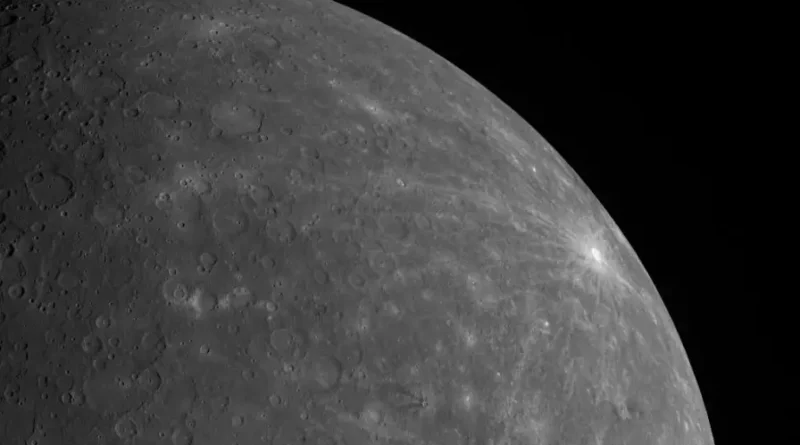7 Surprising Secrets of Mercury Planet You Need to Know
When it comes to the Solar System, most people know about Earth, Mars, or Saturn’s rings. But the Mercury Planet, the closest world to the Sun, is just as fascinating—maybe even more mysterious.
It’s the smallest inner planet, yet one of the densest. It has no thick atmosphere, but it does have a magnetic field. It’s baking hot during the day and freezing cold at night, yet water ice hides in its polar craters.
In this detailed guide, let’s break down everything you need to know about Mercury Planet—from its physical features and strange orbit to the space missions that revealed its secrets.
Why Mercury Planet is So Unique
Mercury is the innermost planet of our Solar System, orbiting closest to the Sun. It combines opposites in ways no other planet does:
- Smallest Planet in the Solar System
With a diameter of just 4,880 km, Mercury is only slightly bigger than Earth’s Moon. If Earth were the size of a basketball, Mercury would be the size of a golf ball. - Fastest Orbit Around the Sun
Mercury takes only 88 Earth days to complete a trip around the Sun. That means a year on Mercury is less than three months on Earth. - Extreme Temperatures
During the day, surface temperatures can reach up to 430°C (800°F)—hot enough to melt lead. But at night, with no atmosphere to hold heat, temperatures drop to -180°C (-290°F). - Dense and Metal-Rich
Mercury is the second densest planet after Earth. This is because nearly 70% of its mass is metallic iron, making its core extremely large compared to its overall size.
👉 These unusual traits make Mercury more than just a small rocky planet—it’s a puzzle that scientists are still trying to solve.
Mercury’s Orbit and Day-Night Cycle
As an inner planet, Mercury follows a path around the Sun that is not a perfect circle but an elongated ellipse. At its closest (perihelion), it is just 47 million km from the Sun, and at its farthest (aphelion), about 70 million km away.
Now here’s the strange part:
- Mercury rotates very slowly. A full rotation (its “day”) takes 58.7 Earth days.
- But because of its orbital speed, one solar day (sunrise to sunrise) lasts 176 Earth days.
This means that one day on Mercury is twice as long as its year. Imagine living on a planet where a single day lasts almost six months!
Even more bizarre: in some places, the Sun would appear to rise, pause, move backward a little, then continue rising again—all in one day.
Mercury’s Surface and Geological Features
At first glance, Mercury looks a lot like the Moon—gray, cratered, and ancient. But missions like Mariner 10 and MESSENGER showed us that Mercury has its own unique story written on its surface.
Key Features of Mercury’s Surface
- Caloris Basin
One of the largest impact craters in the Solar System, about 1,550 km across. The asteroid that created it hit Mercury with such force that it caused ripples on the opposite side of the planet. - Lobate Scarps (Cliffs)
These giant cliffs formed as Mercury’s metallic core cooled and the planet shrank, literally wrinkling its crust. - Volcanic Plains
Unlike the Moon, Mercury had widespread volcanic activity, which resurfaced parts of the planet in ancient times.
👉 These features remind us that even the inner planets have diverse geological histories.
Water Ice on Mercury Planet
Despite being so close to the Sun, Mercury has water ice in permanently shadowed craters at its poles.
- Mercury’s tilt is almost zero, so sunlight never reaches the deep polar craters.
- Temperatures there stay below freezing, allowing ice to survive.
- NASA’s MESSENGER mission confirmed the presence of this ice using its instruments.
This discovery shows how even the innermost planet can keep surprising us.
Mercury’s Atmosphere and Magnetic Field
Mercury doesn’t have a thick atmosphere like Earth or Venus. Instead, it has a fragile exosphere, made of atoms blasted off the surface by solar radiation and meteoroids.
Surprisingly, Mercury also has a magnetic field. This is rare for a small planet so close to the Sun. Its magnetic field proves that Mercury’s huge metallic core is still partly molten.
👉 These features connect Mercury’s evolution to the broader story of the inner planets.
How Was Mercury Formed?
Mercury’s massive metallic core is one of the greatest mysteries in planetary science. Was it caused by a giant impact, chemical processes in the early Solar System, or by forming in a unique hot zone near the Sun?
Each theory has strengths and weaknesses, but data from MESSENGER and the upcoming BepiColombo mission may finally give us answers.
Space Missions to Mercury Planet
Mariner 10 (1973–1975)
First to fly by Mercury, capturing detailed images and discovering its magnetic field.
MESSENGER (2004–2015)
First orbiter of Mercury. It mapped the planet, confirmed water ice, and revealed surprising chemistry.
BepiColombo (2018–2026)
A joint ESA–JAXA mission currently en route. It will arrive in 2026 to continue studying Mercury’s origin, structure, and interaction with the Sun.
Why Mercury Planet Matters
Mercury is more than just the smallest planet—it’s a natural laboratory for studying how rocky planets form. By comparing Mercury with other inner planets like Earth, Venus, and Mars, scientists can better understand how planets evolve in different conditions around the Sun and beyond.
Final Thoughts
The Mercury Planet may be the smallest inner planet, but it holds some of the biggest secrets in the Solar System. From its giant metallic core and wild temperature swings to its mysterious water ice and unique orbit around the Sun, Mercury keeps challenging scientists’ expectations.
With BepiColombo set to arrive in 2026, we’re closer than ever to solving Mercury’s mysteries and understanding why this little planet is so different from its neighbors.

